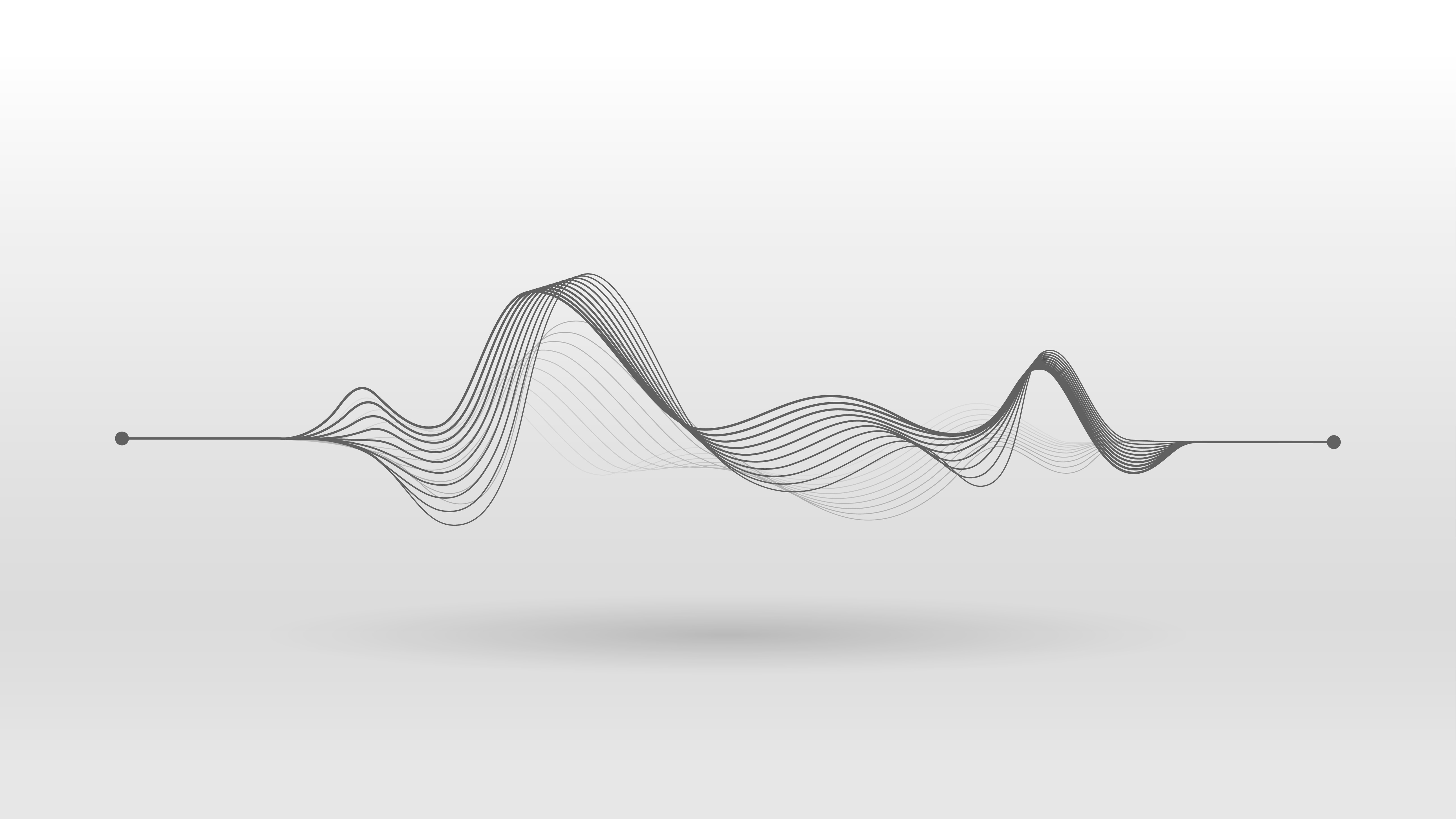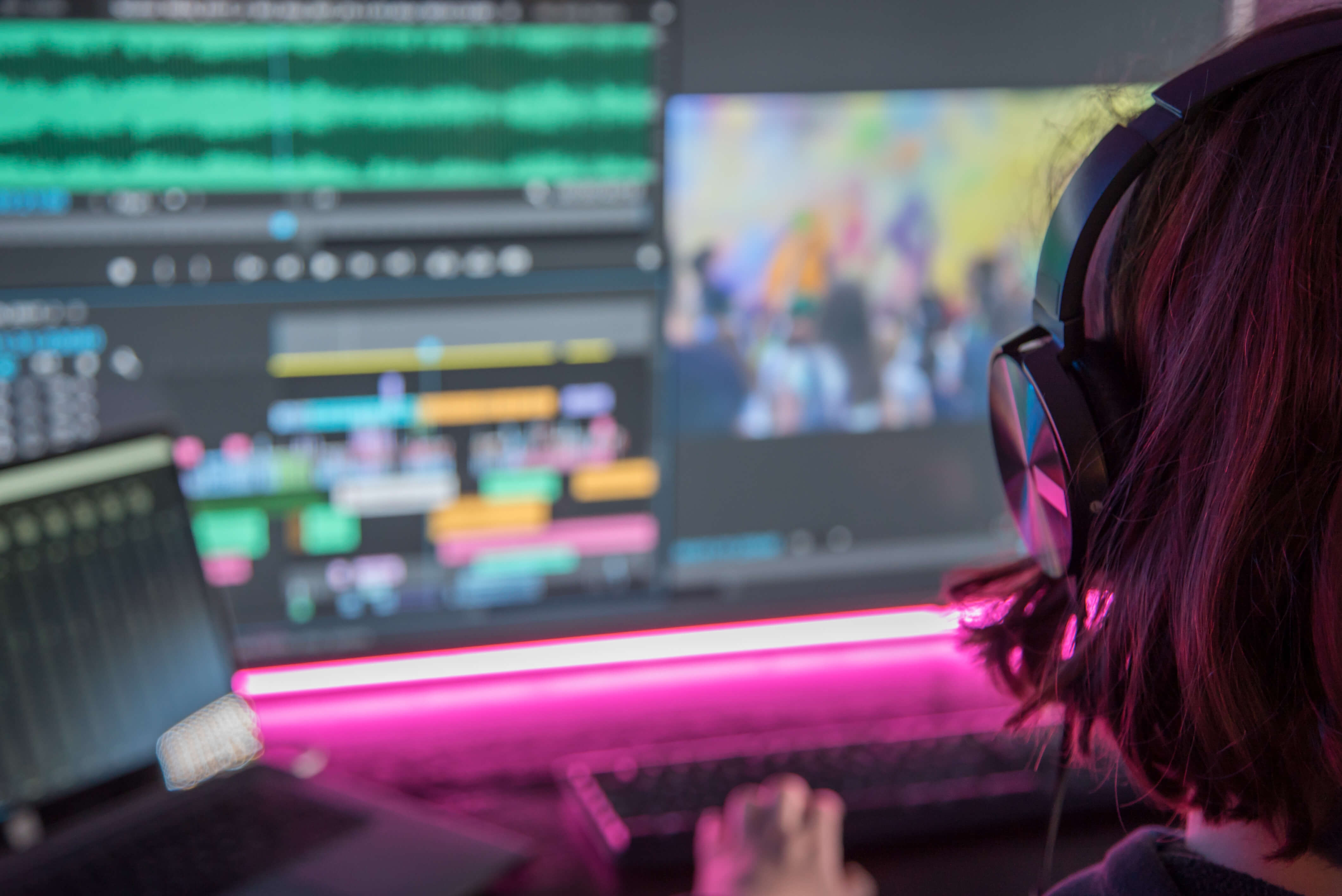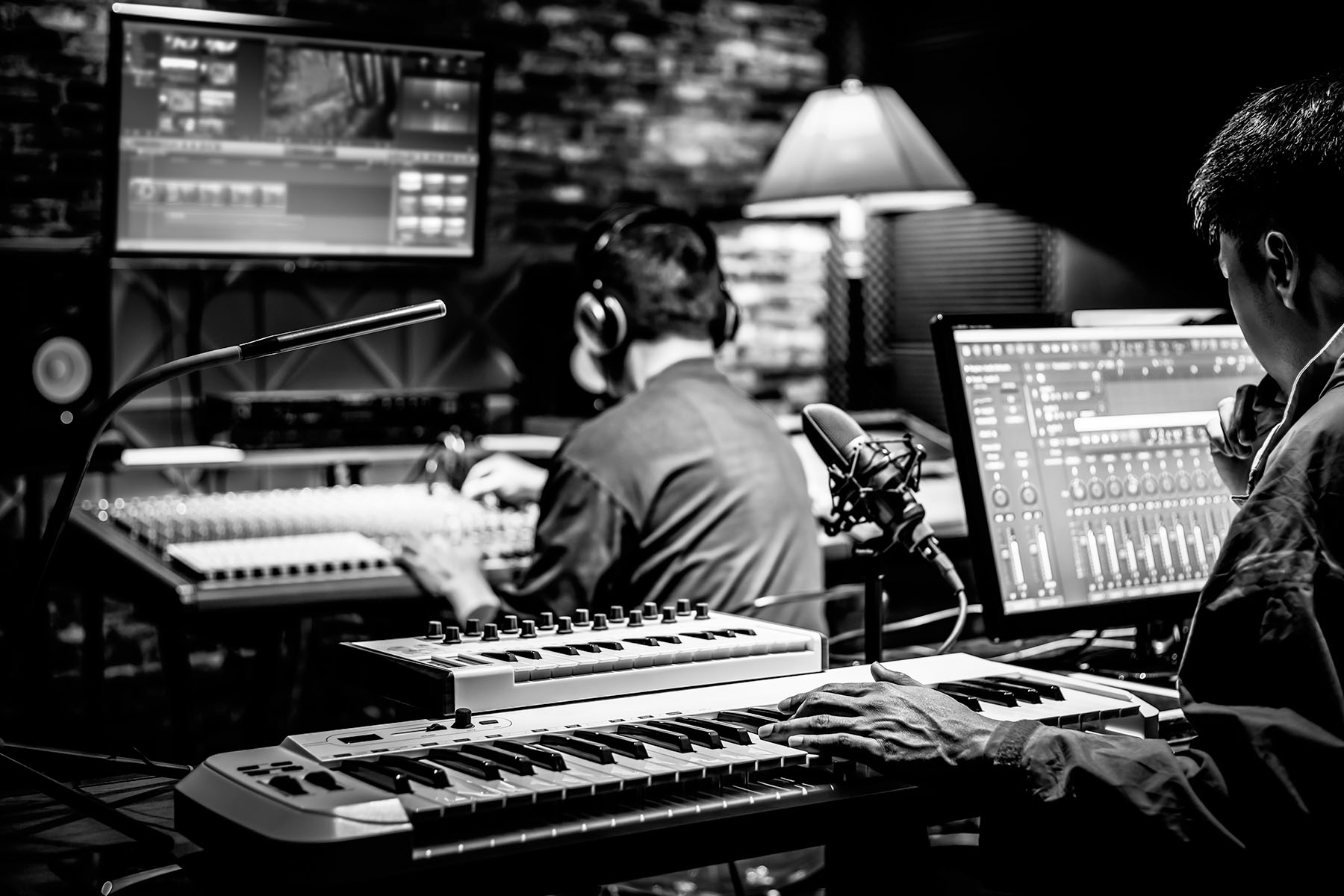
Sound design is an essential part of any creative audio project, from music composition to film, television to radio, podcasts to Youtube videos, game audio to theatrical performances. Quite simply, it’s found everywhere you experience sound!
At its core, sound design is found at the intersection of art and science. It is inherently an artistic process, yet also requires great listening skills, technical prowess, and emotional understanding to effectively deliver impactful results.
It typically involves a mix of sourcing sounds, synthesizing or recording sound materials, sequencing, layering, and further manipulating these sound elements to enhance the overall listening experience.
Sound designers use an ever-growing list of techniques, tools, and software to create unique sounds that support the narrative or emotive quality of a project. This is why sound art is so deep, as it aims to both experientially enhance the medium and emotionally resonate with our listening audience.
The importance of sound design cannot be overstated, as it measurably impacts how audiences perceive and engage with a piece of content. For example, the right sound effects (or purposeful silence) create tension and build suspense in a horror movie, while well-crafted sound designs in music compositions enhance connection and add additional significance beyond melody, rhythm, harmony, and form.
In this article, we will be discussing what sound design consists of, and what it takes (in our 25+ years of experience) to become a successful sound designer. It is important to understand the fundamentals of sound design and develop key skills such as an artistic toolkit, technical proficiency, great listening skills, and attention to sonic detail.
With these skills in hand, aspiring sound designers can take steps toward building their careers in this exciting field. Without further delay, let’s explore what it takes to become a great sound designer and provide tips for creating effective sound designs that resonate deeply with listening audiences.

Basics of Sound Design
While we won't delve deeply into the intricate scientific aspects of sound, such as physics, mathematics, or signal processing, it's crucial to lay a basic groundwork for our understanding of sound design. This includes an elementary grasp of sound waves, a glance at the critical components inherent in sound design, and a brief exploration of how these principles are employed across a spectrum of music and audio projects.
Understanding sound waves
Sound is a type of energy that moves through air or other mediums via waves. These waves are characterized by three main measurable properties: frequency, amplitude, and waveform. And further, we’ll look at the definition of timbre, a critical property of sound to understand for masterful sound design.
Frequency refers to the count of periodic (repeating) waves passing a given point per second, measured in Hertz (Hz). A higher frequency count translates to a higher pitch, therefore increased Hz. For example, human ears generally can perceive between 20Hz and 20,000Hz; the latter is often abbreviated as 20kHz. This frequency range is where most audible sounds are perceived by humans. Age, sex, and many other factors contribute to an individual's sensitivity within the audible hearing range.
Amplitude refers to the intensity or height of a sound wave and determines how loud or quiet a sound source is. Amplitude is measured in decibels (dB), with higher dB values indicating louder sounds. While amplitude is related to loudness, it is not the only way to measure loudness. For example, humans perceive certain frequencies and certain tones (known as timbres) as louder or softer than others, perhaps an entirely new article or book in itself.
And then there is waveform, which refers to the shape of a wave. Different wave shapes produce different types of sounds and timbres. For example, sine waves produce pure and distinctly pitched tones while complex waveforms such as noise or naturally occurring sounds produce more complex and evolving sound waveforms.
Finally comes the essential concept of timbre, often referred to as the "color" or “tone color” of sound. It's timbre that distinguishes a piano from a violin when they play the same note at the same volume. It's determined by multiple factors including the evolving harmonic content of the sound, the attack and decay characteristics over time, and any movements (also known as modulations) that might be a part of the sound. For sound designers, understanding and manipulating timbre is crucial in creating impactful sound designs. A great sound designer can use timbre to create immersive and emotional audio environments - from the distinct hum of a futuristic city in a sci-fi film to the unsettling, eerie whispers in a horror podcast.
Understanding sound waves on a theoretical level is not all it takes to become an exceptional sound designer. The artful, creative manipulation of these aspects can however set apart exceptional sound designers in their field once mastered.

Sound Design Opportunities
With a basic understanding of sound theory, it's time to learn about the opportunities available in the sound design arena. Generally speaking, sound designing is found within four primary disciplines: music, sound effects (SFX), dialogue, and ambiance.
Beyond these main categories, additional specialized areas of sound design include:
- Foley
- Field Recording / Archival
- Sound Mixing
- Sound Editing
- Audio Engineering
- Sound Synthesis
- Audio Restoration
- Automated Dialogue Replacement (ADR)
- Spatial Audio Design
Music represents a broad and expanding arena of sound design, thanks to a surge in interest in sound synthesis, music composition, and growth in sound tool usage over the last decades across modern genres. The evolving music technology landscape often requires understanding how synthesizers, samplers, DAWs, and audio effects processors work (a broad topic in itself). Effective sound design within music enhances the auditory journey, invigorates otherwise dull instruments, and amplifies the contemporary appeal to the listener.
Sound Effects, often abbreviated as SFX, are purposefully created sounds that enhance visual narratives, evoke specific moods, or simulate real-life auditory experiences. These could range from explosive sounds that accompany dramatic action scenes, to the subtle crunching of gravel underfoot as a character tiptoes, or the intricate recreation of unique animal calls to bring a scene to life. Sound effects breathe authenticity into the sonic landscape, bridging the gap between the audience's real-world experiences and the universe presented in the media.
Dialogue is the spoken interaction between characters and carries significant weight in a narrative context. It's more than just words; it's the timbre and pitch of voices that reveal character traits, emotions, and strategic pauses that build tension. The quality of dialogue relies heavily on careful voice casting, clear recording techniques, and meticulous post-production editing. A well-crafted dialogue brings characters to life and forms an intimate bond with the audience.
Lastly, Ambience is the subtle layer of background noise that provides a contextual canvas for a scene. It's the distant birdsong that underscores a peaceful forest scene or the constant hum of traffic that grounds a sequence in a bustling city. Ambient sounds contribute to creating a believable atmosphere, transporting audiences into the narrative's setting.
Sound Design in Different Media
The approach taken when designing sounds varies depending on which medium it's intended for. Below we discuss a few mediums and their unique requirements:
Film
In film-making, sound designers work closely with directors during post-production stages where they add layers upon layers of SFXs like foley sounds such as footsteps recorded separately from shooting scenes along with ambient noises like wind blowing outside windows giving more depth to scenes.
Video Games
Video game developers consider player immersion as their top priority while designing game audio which includes creating interactive SFXs like footsteps changing according to surfaces walked on along with environmental sounds changing dynamically based on players' actions.
Virtual Reality
Virtual reality aims at providing realistic experiences so audio cues play an even more significant role here than other mediums thus requiring high-quality binaural recordings along with effective spatialization techniques that help place objects accurately around users.
Music Production
In music production, sound design is a critical component of creating engaging and moving musical experiences. Sound designers leverage a variety of tools, from synthesizers and samplers to digital effects and audio processing software—to sculpt sounds that evoke specific emotions and set the mood. Whether creating a warm, resonant bass line for a jazz song, shaping ethereal pads in an ambient piece, or sculpting aggressive, gritty sounds for electronic music, the sound designer's role in music production is vital in bringing a composer's vision to life in unique and captivating ways.
Key Skills for Sound Designers
As mentioned previously, sound design is a multidisciplinary field that marries technical mastery with creative instinct (both of which take practice and time, feedback, and reiteration). While command of sound tools and technology is completely necessary to get ahead in the field, so too are your abilities to keenly perceive the small details of sound (and even their emotional quality), conceptualize ideas beyond the conventional, and having the ability to collaborate within a larger production team.
Firstly, the devil is in the detail - or in the case of sound design, the dialogue, the rustling leaves, the distant car horn, or the swelling synth effects. A sound designer with refined auditory prowess can weave these elements together to fabricate an absorbing scene or a captivating emotive quality. Their trained ear detects not just isolated sounds but appreciates their symphony, their dynamic interplay within the grander scheme of a scene or production.
Creativity, then, is the sound designer's companion when paired with developed listening skills. Armed with imaginative flair, a great sound designer can venture beyond the realm of commonplace sounds and can sculpt unique experiences that serve the story and enhance its purpose. This requires envisioning unheard sounds and experimenting with a variety of (often quite fun) techniques and tools to bring them to life.
To translate creative visions into audible realities, a sound designer needs a solid grounding in the technicalities of making and manipulating sound. Familiarity with industry-standard software such as Pro Tools or Logic Pro enables the designer to skillfully manipulate and finesse audio files. There are so many tools to list here, but standalone sound software and DAWs are a great place to begin.
Lastly, the ability to work harmoniously within a team is crucial for modern sound artists. A sound designer's role is integral to the collective endeavor of production, so they must be adept at collaborating with other creatives such as directors, producers, and other professionals. Clear, effective communication and the ability to compromise ensure the alignment of creative visions and the seamless integration of all production elements. One attitude that will get you far: the client is the boss, but your creativity should never feel stifled. You should always work collaboratively to achieve a common goal.

Steps to Becoming a Sound Designer
Becoming a sound designer requires a combination of education, networking, practice, and gaining experience. While there is no one specific path to becoming a sound designer, following these steps can help you get started on your journey.
Educational Requirements
Many sound designers have a degree in audio engineering, music production, or a related field. These programs provide students with a foundation in the technical aspects of sound design, such as recording techniques, signal processing, and mixing. In addition to technical skills, aspiring sound designers need to have a strong understanding of music theory and composition.
While formal education is not always necessary to become a successful sound designer, it can be beneficial for building connections and gaining hands-on experience. Look for programs that offer internships or job placement opportunities to help jumpstart your career.
Networking and Building Relationships
Networking is crucial for anyone looking to break into the music industry. Attend industry events and conferences to meet other professionals in the field and learn about new technologies and techniques. Join online communities or forums where you can connect with other aspiring sound designers and share your work.
Building relationships with other professionals in the industry can lead to job opportunities down the line. Offer your services as an assistant or intern to gain valuable experience and make connections with established sound designers.
Gaining Experience
Experience is key when it comes to becoming a successful sound designer. Start by working on small projects such as short films or student productions to build up your portfolio. Offer your services for free or at a reduced rate while you're starting to gain experience and build relationships with clients. Do your absolute best possible work and do not initially get too caught up in pricing. Be financially fair to yourself, however, make sure your work with the client stands out so you can get repeat business.
As you gain more experience, consider specializing in a particular area of sound design such as Foley artistry or dialogue editing. This will allow you to develop expertise in that area and set yourself apart from other generalist sound designers.

Tools and Software Used in Sound Design
When it comes to sound design, having the right tools and software is essential. One of the most important pieces of software for any sound designer is a Digital Audio Workstation (DAW). This is where all of the audio files are imported, edited, and mixed to create the final product. Some popular DAWs include Pro Tools, Logic Pro X, and Ableton Live.
In addition to a DAW, there are also a variety of plugins and effects that can be used to enhance and manipulate sounds. These can range from simple EQs and compressors to more complex reverbs and delays. Some popular plugin manufacturers include Waves, FabFilter, and iZotope.
Field recording equipment is another important tool for sound designers. This includes microphones, recorders, and other hardware used to capture real-world sounds. Many sound designers will go out into the field to record their sounds rather than relying on pre-existing libraries.
MIDI controllers are also commonly used in sound design. These allow for more intuitive control over virtual instruments and other software-based sounds. A MIDI controller can be anything from a simple keyboard to a complex modular step sequencer.
It's worth noting that while having access to high-end equipment can certainly make the job easier, it's not always necessary. Many successful sound designers have built their careers using nothing more than a laptop and a pair of headphones.
Tips for Creating Effective Sound Designs
Effective sound design can make or break a film, video game, or any other media project. Sound designers must understand the story and characters they are working with to create a soundscape that enhances the overall experience. One of the key tips for creating effective sound design is to experiment with different sounds. Sound designers should not limit themselves to traditional sounds but should be open to exploring new and unconventional sources of audio. This can involve recording unique sounds in the environment or using software tools to manipulate existing audio files.
Collaboration with the rest of the creative team is also essential for creating effective sound design. Sound designers need to work closely with directors, producers, editors, and other members of the production team to ensure that their work aligns with the overall vision of the project. By understanding how their work fits into the larger picture, sound designers can create a cohesive and immersive soundscape that elevates the audience's experience.
Finally, sound designers need to continue learning and improving their craft. The field of sound design is constantly evolving, and staying up-to-date on new tools and techniques is crucial for success. Attending workshops, conferences, and networking events can provide valuable opportunities for sound designers to learn from others in their field and stay current on emerging trends.
In conclusion, becoming a successful sound designer requires a combination of technical skills, creative talent, collaboration abilities, and continuous learning. By understanding what sound design is all about and honing key skills such as recording techniques, editing software proficiency, and creativity towards designing elevated sounds & effects; aspiring professionals can take steps towards achieving their goals in this exciting industry. With dedication and hard work along with these tips mentioned above - anyone can become an expert at creating effective audio experiences that captivate audiences across various platforms!